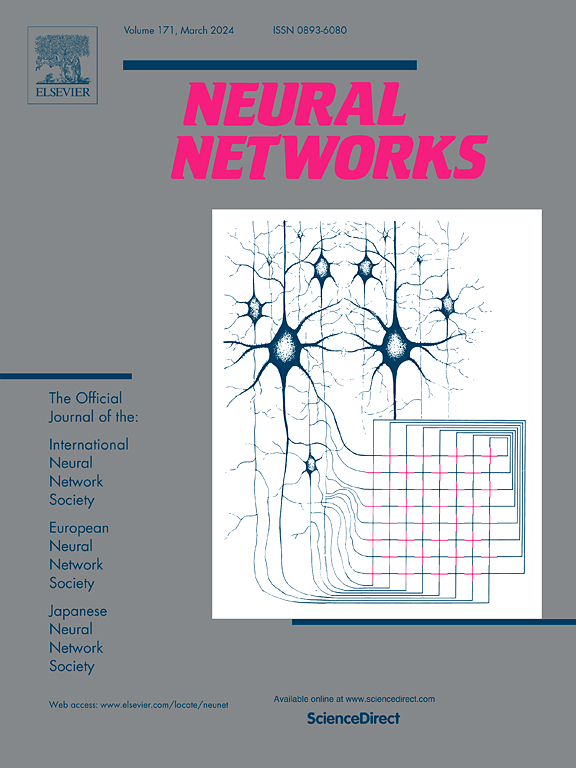A lightweight spiking neural network for EEG-based motor imagery classification
IF 6.3
1区 计算机科学
Q1 COMPUTER SCIENCE, ARTIFICIAL INTELLIGENCE
引用次数: 0
Abstract
Spiking neural networks (SNNs) aim to simulate the human brain neural network, using sparse spike event streams for effective and energy-efficient spatio-temporal signal processing. This paper proposes a lightweight SNN model for electroencephalogram (EEG) based motor imagery (MI) classification, a classical brain–computer interface paradigm. The model has three desirable characteristics: (1) it has a brain-inspired architecture; (2) it is energy efficient; and, (3) it is dataset agnostic. Within-subject and cross-subject experiments on three public datasets demonstrated the superiority of our SNN model over four classical convolutional neural network based models in EEG based MI classification.
基于脑电图的运动意象分类的轻量级脉冲神经网络
尖峰神经网络(SNNs)旨在模拟人脑神经网络,利用稀疏的尖峰事件流进行有效和节能的时空信号处理。本文提出了一种轻量级SNN模型,用于基于脑电图(EEG)的运动图像(MI)分类,这是一种经典的脑机接口范式。该模型具有三个理想的特征:(1)具有受大脑启发的架构;(2)节能;(3)与数据集无关。在三个公开数据集上进行的主题内和跨主题实验表明,我们的SNN模型在基于EEG的MI分类中优于四种经典的基于卷积神经网络的模型。
本文章由计算机程序翻译,如有差异,请以英文原文为准。
求助全文
约1分钟内获得全文
求助全文
来源期刊

Neural Networks
工程技术-计算机:人工智能
CiteScore
13.90
自引率
7.70%
发文量
425
审稿时长
67 days
期刊介绍:
Neural Networks is a platform that aims to foster an international community of scholars and practitioners interested in neural networks, deep learning, and other approaches to artificial intelligence and machine learning. Our journal invites submissions covering various aspects of neural networks research, from computational neuroscience and cognitive modeling to mathematical analyses and engineering applications. By providing a forum for interdisciplinary discussions between biology and technology, we aim to encourage the development of biologically-inspired artificial intelligence.
 求助内容:
求助内容: 应助结果提醒方式:
应助结果提醒方式:


